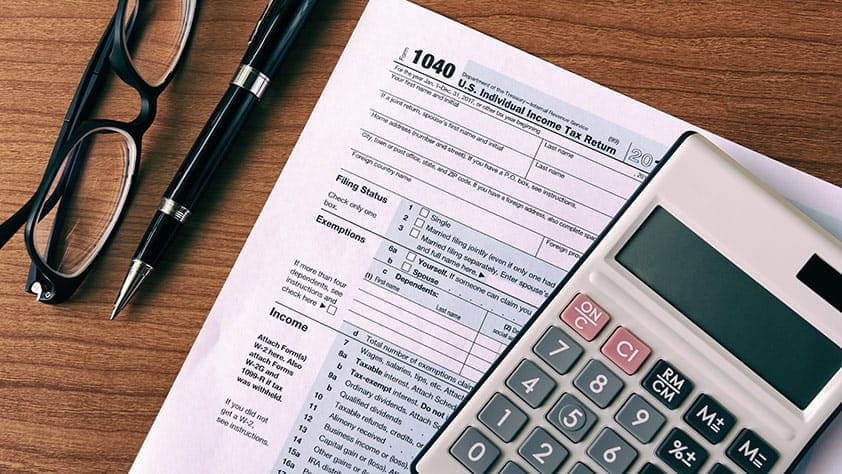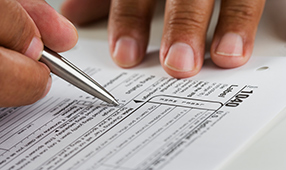Filling out your tax returns and keeping track of deductions remains as complicated as ever. One benefit that’s still around is the educator expense deduction. To help you get the tax breaks you’re entitled to, it’s critical to keep receipts or a careful log for the classroom supplies deduction and other tax benefits. When reviewing your deduction options, remember that many provisions of the tax code have income caps and phase-outs and other wrinkles that may affect your actual tax liability.
Be sure to work with a tax adviser or use reliable tax software that clearly addresses your situation, especially if you are in a higher income bracket. (Search for NEA member discounts and cash-back offers on tax prep software through our NEA Discount Marketplace.)
Here’s a rundown of the key changes from the 2023 tax year to help you complete your 2024 tax forms and find tax deductions that can help you recoup some of your educator expenses.
Expansion of the Educator Expense Deduction
The above-the-line Educator Expense Deduction allows eligible educators to deduct up to $300 of unreimbursed expenses for classroom supplies and professional development courses. The limit will rise in $50 increments in future years based on inflation adjustments. This deduction is particularly advantageous because it’s above the line on Schedule A, which means eligible educators don’t have to itemize to claim it, and it reduces your adjusted gross income (AGI).
If both spouses are eligible educators and file jointly, the maximum deduction is $600, but neither spouse can deduct more than $300 of their own expenses. This above-the-line deduction has become even more important since the 2017 tax reforms, which nearly doubled the standard deduction, raising the threshold for itemizing even higher.
Eligible educators include K-12 teachers, instructors, counselors, principals and aides who work at least 900 hours during the school year in a school that provides elementary or secondary education as determined under state law.
Qualified expenses include:
- Books, supplies and other materials used in the classroom
- Equipment, including computer equipment, software and services
- COVID-19 protective items such as masks, disinfectants and air purifiers
- Professional development courses related to the curriculum or the students they teach
Note that the amount you can deduct is reduced by the amount you receive from any of these instances:
- Excludable U.S. series EE and I savings bond interest from Form 8815
- Nontaxable qualified tuition program earnings or distributions
- Any nontaxable distribution of Coverdell education savings account earnings
- Any reimbursements received for these expenses that weren’t reported in box 1 of Form W-2
It's important to note that educators cannot deduct a dedicated home office or unreimbursed expenses exceeding $300 on their federal tax returns. Additionally, expenses related to home schooling or nonathletic supplies for health or physical education courses are not eligible for this deduction. This deduction was eliminated by the 2017 Tax Cuts and Jobs Act.
However, several states still allow this deduction if itemized expenses are higher than the standard deduction: Alabama, Arkansas, California, Hawaii, Minnesota, New York and Pennsylvania. If you live in one of these states, consult your tax adviser to see what’s tax deductible.
Expiration of the Charitable Donations Deduction
The special Charitable Donations deduction for up to $300 has expired. You can deduct charitable contributions only if you itemize. This has become more difficult since the standard deduction was increased, and it will rise again for the 2024 tax year. Singles can claim a standard deduction of $14,600 for 2024, up from $13,850 for 2023. Those who are married filing jointly get a standard deduction of $29,200 in 2024, compared with $27,700 in 2023.
Itemize for the State Sales Tax Deduction
Educators may also benefit from the state and local sales tax deduction (an alternative for those in states without a state income tax), even though it’s not specifically designed for them. However, you must itemize in order to claim these deductions.
For the 2018 tax year and beyond, the federal itemized tax deduction for state and local taxes—including property taxes—was capped at $10,000, and the threshold for itemizing became much higher with the increased standard deduction.
ADDITIONAL TAX SITUATIONS FOR EDUCATORS
Income from outside work, such as a summer job or tutoring
If there is no additional withholding on this outside work, you want to be sure to avoid a penalty for under-withholding, which occurs when your overall tax liability exceeds the amount of tax you had withheld by certain margins.
If this is the first year you’ve had extra income, there won’t be any penalty, because your withholding at work will cover 100% of your previous year’s income.
If you regularly have additional income, you may want to consider adjusting your withholding. Previously, you could increase your withholding by claiming fewer personal exemptions on your W-4 [PDF], but this option is no longer available due to tax reform. Now, you can either specify an additional amount to be withheld on your W-4 or make quarterly estimated tax payments on your extra income.
The outside income should be reported on a Schedule C, where you can also deduct any expenses associated with the outside job. You are also responsible for paying self-employment taxes (Social Security and Medicare) on this income, which are calculated on Schedule SE.
Unreimbursed expenses related to employment
As noted previously, the itemized deductions for employee expenses beyond $300 have been eliminated, so that federal deduction is no longer available.
Rules for deducting expenses for a home office for self-employed individuals, as well as for equipment such as computers, are fairly strict. The home office space must be used exclusively for work purposes, which is a tough criterion to meet.
Deducting education expenses
The Lifetime Learning Credit is a nonrefundable tax credit for eligible taxpayers who pay qualified tuition and related expenses for higher education. It provides a credit up to $2,000 per tax return, calculated as 20% of the first $10,000 in qualified education expenses. This credit is available for all years of post-secondary education and for courses to acquire or improve job skills, with no limit on the number of years it can be claimed. This credit is not limited to undergraduate education, nor do you have to be pursuing a degree, so educators may make use of this credit for their own career development. The credit phases out for taxpayers with modified AGI between $80,000 and $90,000 for single filers ($160,000 and $180,000 for joint filers).
The American Opportunity Tax Credit, which can apply to the first four years of higher education, isn’t usually an option for educators because most have already completed a four-year degree. However, this credit, which is capped at $2,500, can be claimed for their dependent(s). Taxpayers can choose only one of these two options for qualified education expenses.
Save on tax prep software with your NEA membership
As an NEA member, you can earn cash back when you purchase tax prep products and services, such as TurboTax, TaxAct and H&R Block, through NEA Discount Marketplace. Select the “Office Supplies” filter and click “Finance & Tax Prep” to find available offers to members during this tax season.
NOTE: All of the information in this article is accurate as of March 1, 2025.










